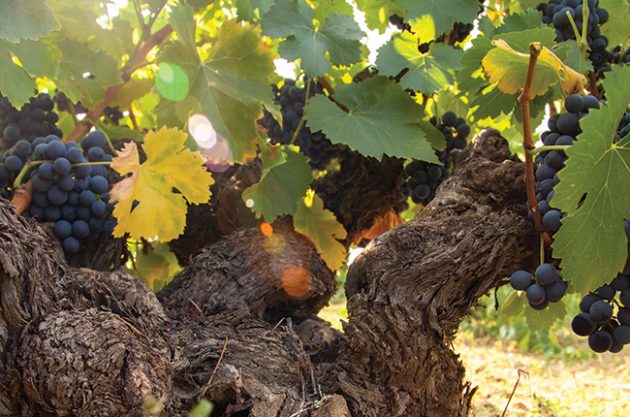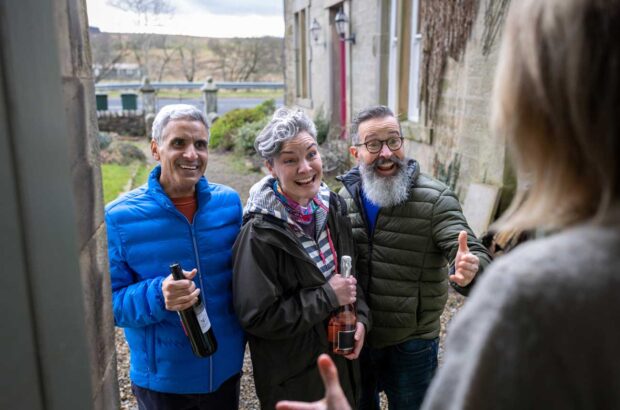Promotional feature
Founded in the mid-18th Century, Marqués de Riscal is steeped in tradition...Promotional feature
Marqués de Riscal: Impeccable contemporary quality founded on old know-how roots
Founded in the mid-18th Century, Marqués de Riscal is steeped in tradition, being one of the proudest and oldest wineries in Spain, yet it has never rested on its laurels, always keeping an eagle eye on the future; an outlook arguably exemplified no better than its stunning, Frank Gehry-designed winery – a ground-breaker of its time – and it is also being responsible, in 1995, for the introduction of the very first grape-sorting table in Rioja.
‘For Marqués de Riscal, the vine is one of the main keys in achieving unique, fine quality wines with a high degree of typicity,’ says its President Alejandro Aznar. ‘This is not something that we are doing just now, it’s something we have always done: making quality wines.’
 Riscal keeps pushing onwards and upwards, encapsulated by its new, limited edition rosé (only around 5.000 bottles are produced each year) which is a blend of old, ungrafted Garnacha and Tempranillo, produced from the natural, first bleed of free-run must from the grapes soon after they are placed in tank. Rosé has long since been seen a wine just for spring and summer, but today it’s a wine for all seasons, and this example takes it to another level.
Riscal keeps pushing onwards and upwards, encapsulated by its new, limited edition rosé (only around 5.000 bottles are produced each year) which is a blend of old, ungrafted Garnacha and Tempranillo, produced from the natural, first bleed of free-run must from the grapes soon after they are placed in tank. Rosé has long since been seen a wine just for spring and summer, but today it’s a wine for all seasons, and this example takes it to another level.
‘We have chosen healthy, ungrafted vines over 80 years old, planted on sandy, gravelly terraces high above the River Duero valley in Toro,’ says Luis Hurtado de Amézaga, Technical Manager of Marqués de Riscal’s property in Rueda where this wine is crafted. ‘The idea is to make a much more serious version of a rosé wine and that is why we are using one of our best vineyards.’
‘These sandy soils helped protect this land from phylloxera, but also assist in allowing the water to drain away and allow us to cultivate the vines following organic methods. The vines are bush vines and the yields are low and are always picked by hand.’
‘The important thing is to know the type of wine you want to make and then find the ideal raw material,’ says Aznar. ‘And that’s what has happened with Marqués de Riscal Viñas Viejas rosé: the search for the land and the vines which could bring the greatest character to the wine and highlight the essence of the Garnacha and Tempranillo varieties.’

‘The Garnacha and Tempranillo varieties combine perfectly to produce a fresh, round mouth-feel,’ says Hurtado de Amézaga. ‘The Garnacha brings freshness, good acidity, floral notes and low colour intensity. The Tempranillo provides body and structure, as well as red-berry fruit and greater depth of colour. The result is an “a-typical” rosé wine, with rare length and great complexity on the palate.’
In an intriguing twist, after the wine is fermented, fine lees from Sauvignon Blanc – one of the hallmarks of Rueda – are added. ‘We have taken advantage of our Rueda winery to give this wine distinctive ageing,’ says Hurtado de Amézaga. ‘This lees ageing brings greater character to the wine; making it creamier, improving its structure on the palate and simply giving it more personality. The Garnacha and Tempranillo combine perfectly to produce a fresh, round mouth-feel, but with the fruit aspects heightened by those few months in contact with the Sauvignon Blanc lees; an innovative approach in the production of a rosé.’
Marqués de Riscal says that Viñas Viejas is a wine which contains the purest essence of the Garnacha and Tempranillo varieties, and in producing it has sought to look back, recall its winemaking tradition but at the same time make a state-of-the-art wine; impeccably representing its ongoing virtues and values.
‘Make no mistake,’ states Hurtado de Amézaga. ‘The fruit in this wine is good enough to make a great red wine, but we’ve used it to make a rosé!’







